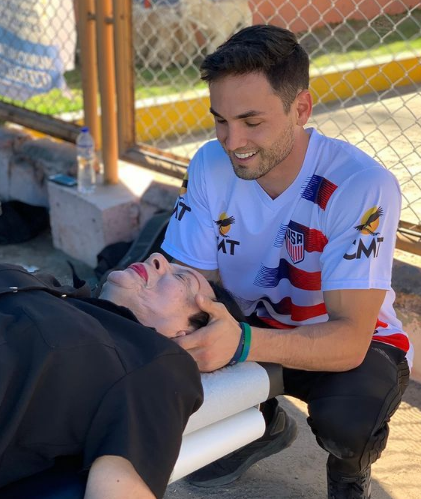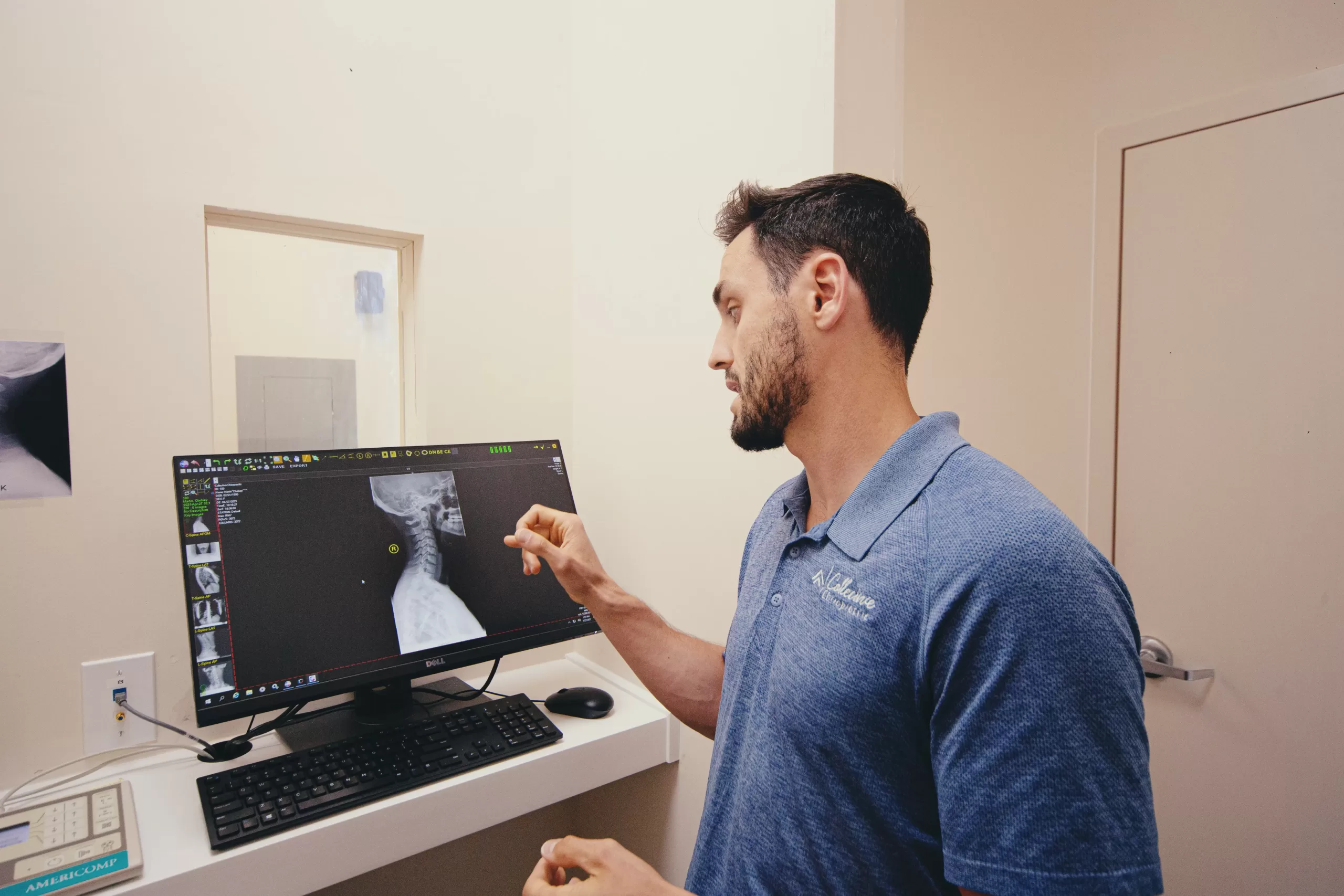Are you taking narcotics to treat your shoulder pain? Stop. To find the source of your discomfort and receive chiropractic therapy, seek assistance and make an appointment with your Collective Chiropractic chiropractor.
While medications can help you feel better immediately, they don’t treat the underlying source of pain. You shouldn’t be shocked if you continue to experience discomfort even after the prescription wears off. Visit a shoulder pain chiropractor or make an appointment for your corrective treatment instead of turning to painkillers. To stop the pain from returning, it would guarantee that the source of the discomfort was found and addressed.
Collective Chiropractic offers a holistic chiropractic treatment that is not only insurance-covered and affordable but also addresses the source of your pain. Your first session with us will involve an initial consultation in which our chiropractor will assess your condition and ask about your medical history and current state. This is essential since it helps us understand what might be causing your discomfort, allowing us to target our treatment better and ensure that we provide you with the care you deserve.
Types of Shoulder Pain
Sprain
If you’ve ever experienced a shoulder sprain, then you know it can put you out of commission for weeks. So what is shoulder sprain and why does it hurt so much?
A shoulder sprain is an injury to the soft tissue of the joint that connects your upper arm bone to your shoulder blade. It often occurs when the ligaments (the tough bands of connective tissue anchored around joints) are overstretched or torn. And because shoulders are used in almost every physical activity, from sports to everyday activities like carrying groceries, it can be easy to injure them.
So how can you tell if you have a shoulder sprain? Common signs include a sudden onset of pain while lifting something heavy , intense pain or discomfort when moving the shoulder in certain directions, swelling of the joint and/or bruising on the area. You might even hear a popping sound or feel shoulder pain when lifting an arm.
If you think you’ve sprained your shoulder, it’s best to get it checked out by a doctor right away. They can assess the extent of damage and give you advice on how to manage your injury and recovery process. Treatment usually involves rest, ice packs, physical therapy exercises and medications like ibuprofen or acetaminophen to reduce inflammation and pain.
Shoulder sprain can be painful and disruptive, but with the right care and preventive measures it doesn’t have to keep you out of commission for too long.
Frozen Shoulder
Frozen shoulder, also known as adhesive capsulitis, is a joint disorder that causes pain and stiffness in the shoulder. It can be incredibly uncomfortable and make even the most mundane tasks difficult to perform. Fortunately, with proper diagnosis and treatment from a skilled chiropractor for shoulder pain, it’s possible to manage this condition and get back to living life normally.
So what exactly is frozen shoulder? When ligaments or tissues become thickened and inflamed around the shoulder joint, a person will experience restricted movement of their arm due to scarring of surrounding tissues. This can occur due to injury or overuse of the affected area. There are two stages associated with frozen shoulder: freezing stage (also referred to as painful stage) and thawing stage (gradually increasing range of motion).
Symptoms commonly associated with frozen shoulder include pain in the shoulder that radiates down the arm, stiffness upon movement and limited mobility. Pain is usually worse at night and can wake a person from sleep. In some cases, even simple tasks like brushing teeth or getting dressed can be incredibly difficult to do.
The freezing stage can last anywhere from 6 weeks up to 9 months, while the thawing stage may take 1-2 years to complete. It’s important to note that this condition is not always self-limiting; if left untreated it will continue to progress and may require medical intervention.
Diagnosis of frozen shoulder typically involves physical examination and imaging tests such as X-ray or MRI. Treatment typically involves rest, activity modification, physical therapy and sometimes medications. In some cases, if conservative methods fail to provide relief then surgery may be recommended.
If you think you might have a frozen shoulder it’s important to get a proper diagnosis and treatment as soon as possible. With the right care and attention it is possible to manage this condition and get back to living life normally.
Swimmer’s Shoulder
Swimmer’s Shoulder, also known as shoulder impingement syndrome, is a painful condition that affects swimmers and other athletes who use their arms to propel themselves through the water. The condition occurs when the shoulder muscles and tendons are overworked due to repetitive movement or incorrect technique. This can lead to inflammation of the tendons and bursa in the shoulder joint causing pain and reduced range of motion.
The most common symptom of a swimmer’s shoulder is persistent pain on the front or side of the shoulder. It may be accompanied by tenderness when touching certain areas around the joint or decreased mobility when moving your arm away from your body. Other symptoms include tightness in your chest muscles, a snapping sensation when moving your arm, and a grinding sound or sensation in the shoulder joint.
The best way to prevent swimmer’s shoulder is to make sure you are using proper technique while swimming and avoiding overuse of your arms. Make sure that you maintain good posture in the water, keep your elbows close to your body rather than out wide, and use a low-impact breathing technique.
Swimmer’s shoulder can be an uncomfortable condition but with the right treatment plan it can be managed effectively so that you can continue doing the activities you love. Taking proper precautions and following a doctor’s advice can help to reduce the risk of developing this condition and keep you in the water for years to come.
Bursitis
Shoulder bursitis is a painful condition that affects the shoulder joint. It occurs when the bursa, a small fluid-filled sac that lies between the bone and soft tissue in your shoulder, becomes inflamed or swollen. The most common symptom of bursitis is pain around the affected area. Other symptoms may include stiffness in the shoulder, swelling, and tenderness to touch.
The main cause of shoulder bursitis is repetitive strain on the joint from activities like sports, lifting weights, poor posture habits, or even sleeping in an awkward position. This can lead to irritation and inflammation of the bursa sacs around your shoulder joints causing your body to produce too much fluid for them which leads to bursitis.
Treatment usually involves rest and physical therapy to reduce the inflammation and strengthen the muscles around your shoulder. Anti-inflammatory medications may be prescribed to help with the pain and swelling, but it’s always best to consult with a doctor before taking any medications. In more extreme cases, surgery may be required to remove excess fluid or scar tissue from the affected area.
Shoulder bursitis can be a painful and debilitating condition, but with the proper care and treatment, most people are able to manage their symptoms and live active lifestyles free from pain. Being proactive about managing the condition can help you prevent more serious complications down the road.
Tendinitis
Shoulder tendinitis is an inflammation of the tendons in the shoulder. It’s a common condition that can affect anyone, from athletes to people who work in physically demanding jobs. Symptoms typically include pain and stiffness in the affected area and difficulty with certain everyday activities such as reaching overhead or lifting items.
The cause of tendinitis is usually overuse of the shoulder area, either through repetitive motions or improper form while performing a physical task. It can also be caused by an injury or infection, and sometimes it comes on suddenly without any clear trigger.
Treatment for shoulder tendinitis involves rest, ice packs, anti-inflammatory medications, and physical therapy exercises designed to strengthen the muscles around the affected joint. In some cases, surgery may be needed to repair the damaged tendon. With proper care and management, this condition doesn’t have to hinder your day-to-day life.
Nerve Pain
Shoulder nerve pain can be a real bummer. It’s the kind of discomfort that can make you feel like your entire arm is in agony, no matter how small or insignificant the actual movement may be. You might feel a shooting sensation down your arm or even experience tingling sensations and numbness.
When it comes to shoulder nerve pain, there are a few different causes that can contribute to its development. One common cause is damage to the nerves around the neck or shoulder due to trauma, disease, or repetitive activities. Additionally, medical conditions such as diabetes, arthritis, and shingles may also result in shoulder nerve pain.
It’s easy to get discouraged when dealing with shoulder nerve pain, but it doesn’t have to be a life sentence. With proper medical attention and a few lifestyle adjustments, you can decrease your chances of experiencing this annoying discomfort in the future. So take the time to get yourself checked out and start taking control of your shoulder health today.
Injury
Shoulder injury is a common problem that can have a serious impact on your quality of life and your ability to perform everyday tasks. From rotator cuff tears to shoulder dislocation, there are many different types of shoulder injuries that can cause pain, discomfort, and even disability.
- Rotator Cuff Injury – The most common type of shoulder injury is rotator cuff-related pain, which is caused by inflammation or tear in the tendons or muscles that control movement of the shoulder joint. Symptoms of rotator cuff tears include stiffness, weakness in the affected arm, difficulty using the arm normally for activities such as reaching overhead or raising the arm sideways.
- Dislocated Shoulder – Another type of shoulder injury is a dislocated shoulder. This happens when bones in the joint become misaligned, usually due to a fall or blow. Symptoms of shoulder dislocation include pain, swelling, and inability to move the arm normally. This can cause pain and tenderness in the affected area as well as limited range of motion.
- Joint Tear – A joint tear is another type of shoulder injury. This happens when the tissue that connects bones becomes torn or strained, usually due to a sudden movement. Symptoms of a joint tear include pain, swelling, and tenderness in the affected area as well as limited range of motion. A joint tear can cause instability in the joint and can be very painful.
- Impingement – Impingement syndrome occurs when the tendons in the shoulder become swollen and irritated, resulting in pain and reduced range of motion. Symptoms of impingement syndrome include tenderness in the affected area as well as difficulty performing everyday tasks like reaching overhead or lifting an object.
Shoulder injuries can be painful and debilitating, but with proper treatment and care they don’t have to interfere with your quality of life. If you’re experiencing signs or symptoms related to a shoulder injury, seeking medical assistance is essential in order to protect yourself from further harm.

What Causes Shoulder Pain?
Nobody likes to feel shoulder pain – it can be debilitating and make everyday activities difficult. But what causes this type of discomfort? Here are some of the most common shoulder pain causes:
- Injury or Trauma: Shoulder injuries from sports, falls, motor vehicle accidents, and other sources of trauma can cause shoulder pain. Ligament tears, tendonitis, muscle sprains and strains are all potential injury-related causes of shoulder pain.
- Arthritis: Osteoarthritis and rheumatoid arthritis are two types of conditions that commonly affect the joints in the body, including shoulders. Both degenerative arthritis and inflammatory arthritis can cause pain as well as stiffness in the joint.
- Repetitive Movements: Any activities that involve repetitive movement and strain the shoulder muscles can cause shoulder pain. This includes things like overhead lifting, throwing, or playing certain instruments (e.g., guitar). Overworking the shoulder muscles in this way can lead to overuse injuries such as bursitis or rotator cuff tendinitis.
- Poor Posture: Slouching can put additional stress on the shoulders and neck area, resulting in chronic pain and soreness over time. Ensuring you sit up straight with your shoulders back is key to maintaining good posture and reducing the risk of shoulder pain caused by poor ergonomics.
- Stress: Unrelenting mental stress can cause physical tension in the shoulders, leading to pain or aches. Mindful activities like yoga and meditation can help relieve stress and reduce any associated shoulder pain.
The nerves in your neck, spine, and the rest of your body are all connected by your shoulders, which are important joints. An injury to your neck or spinal misalignment is likely to be the source of shoulder pain. A misalignment or other catastrophic injuries, such as tension on your shoulder, ligaments, spine, or back nerves, can be brought on by an event like a fall.
For many shoulder issues, non-invasive treatment or alternative therapies like chiropractic are helpful. If you experience neck and shoulder pain, don’t become alarmed or arrange for surgery just yet.
At Collective Chiropractic, we will use our highly effective chiropractic care to assist you in managing your shoulder pain radiating down arm to fingers. Our approach is natural, and we will do everything we can to help you without resorting to medications or surgery. So contact us today to make an appointment!
Treatment
Spinal manipulation is one of the main therapies used by chiropractors to help with shoulder pain. This technique involves applying a gentle yet precise force to the affected area, helping to realign the spine and relax muscles that may have tensed up due to injury or overuse. By restoring balance between the joints and muscles, it can alleviate tension and discomfort.
In addition to spinal manipulation, soft tissue therapy is often used for shoulder pain relief. This therapy works by releasing trigger points in the muscle where tension has built up over time. It also breaks up adhesions in areas of scarring or fibrous tissue buildup caused by injury or inflammation. With the right combination of techniques, soft tissue therapy can help restore proper movement and ease discomfort.
Overall, chiropractic care for shoulder pain offers an effective way to address discomfort and restore mobility. With a combination of spinal manipulation, soft tissue therapy, therapeutic exercises, and lifestyle advice from your chiropractor, you can find lasting relief and keep your shoulders healthy for the long-term.
Insurance-Covered Shoulder Pain Chiropractor
Of course! Chiropractic therapy can help treat and cure pain in your neck, back, and shoulders. If you’re seeking relief from a persistent ache, a skilled chiropractor shoulder pain can assess and address the underlying issues. Your tendons, ligaments, muscles, or nerves will likely become irritated if you experience a shoulder ache. Bursitis, or the inflammation of the bursa capsule, is the most frequent cause of discomfort.
Collective Chiropractic is the best place for you to go to get rid of that pain in your shoulder or arm. Our skilled and experienced chiropractors are insurance-covered and will help you treat the underlying cause of your pain so that you can feel better and live your life without discomfort.
We are passionate about helping our patients and will do everything we can to ensure you are on the road to recovery. Contact us today to schedule an appointment!



